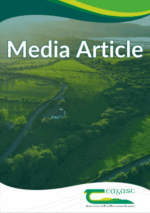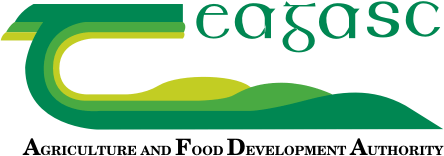
Housing Season: Practical Advice for Livestock Welfare
On many farms, winter housing is just around the corner, and sheds that were in use last year should now be ready for animal housing.
By Enda Neylan
Winter Housing
Teagasc advises farmers to check that sheds are well ventilated before stock are housed, and also pay particular attention to water troughs, gates and feeding barriers. Slats and floors should be inspected for damage, while disinfected surfaces help reduce the carryover of disease. Taking time now to prepare sheds ensures livestock are housed in clean, comfortable conditions, supporting both animal health and performance over the winter.
Healthy Winter Feeding Key for Calving Success
Farmers should check cows’ body condition at housing to ensure they are ready for calving. Suckler cows should score between 3.0 and 3.5, allowing farmers to group and feed them appropriately over winter. Cows that are too fat or too thin face higher risks during calving from difficult births to weak calves, making proper winter conditioning essential.
Fodder Quality and Winter Feeding
Good-quality fodder is key during winter feeding. Silage should be tested for dry matter, protein and energy to match the needs of different stock groups, while hay should be clean and free of mould. Where silage quality is lower, concentrates or meals may be needed to maintain performance. Lick buckets and mineral supplements are also recommended to correct common deficiencies, particularly in selenium, iodine and copper. Knowing the quality of fodder on hand allows farmers to balance diets effectively and avoid costly underperformance over the housing period.
Parasite Control in Cattle
Housing time is ideal for treating cattle for parasites. Key internal parasites include lungworms, stomach worms, and liver fluke, while external parasites such as biting and sucking lice and mites also require attention.
Older cattle often have some resistance to lung and stomach worms, but younger animals, such as weanlings, are more vulnerable and must be treated. Treatments may include white, yellow, or clear drenches, and it is important for farmers to know the developmental stage of the parasites to determine whether re-dosing is necessary to control eggs, larvae, and adult worms.
All cattle should be treated for liver fluke at housing. Liver fluke is influenced by climate, typically occurring in warm, wet conditions in autumn. Understanding the parasite’s life cycle is essential for effective treatment: early immature fluke appear in weeks 1–5, immature fluke in weeks 6–11, and mature fluke after 12 weeks. Most flukicides target only older immature or mature fluke, so a second treatment may be required. Triclabendazole-based products can target all stages, but resistance has been reported in Ireland, so careful use is advised.
External parasites, including lice and mites, must also be controlled, as animals have no natural resistance. Close confinement and long winter coats create ideal conditions for these pests, which can cause scratching and hair loss. Treatments include pour-on or spot-on products or ivermectin-based drenches, either pour-on or injectable.
Teagasc advises farmers to work with their vet to plan a full parasite control programme. Correct product choice, accurate dosing and good timing are essential to protect animal health, avoid resistance, and ensure stock perform well through the winter.
Winter Farm Safety
Winter months bring added risks on Irish farms, particularly when livestock are housed. Farmers should remain vigilant when working in slatted sheds, around stock bulls, or while dosing animals. Proper handling facilities and safe gates reduce the risk of injury, while operators should take care when using machinery in confined yards or under low-light conditions. Avoid distractions while operating machinery.
TAMS
The link for TAMS farm safety information is on the DAFM website under the TAMS 3 collection of schemes. This page provides details on the Farm Safety Capital Investment Scheme (FSCIS), which offers 60% grant aid for approved safety-related equipment and investments to improve safety on farms. Contact your advisor for more information in relation to your specific situation. Some areas covered include – bale slice, yard lighting and calving gates.
